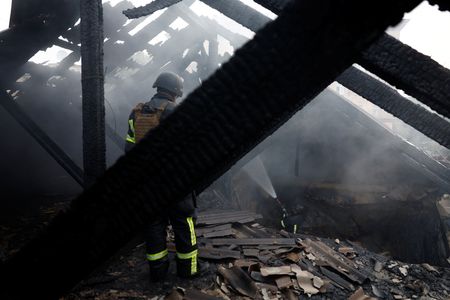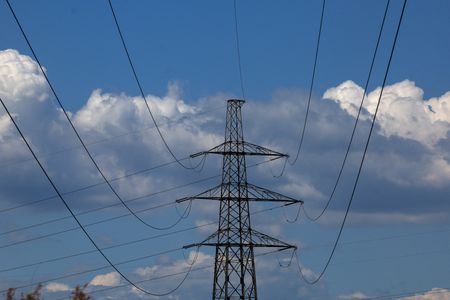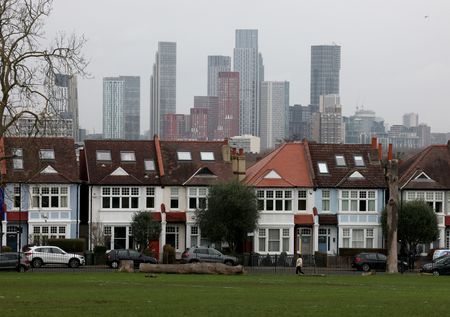WASHINGTON (Reuters) -President Donald Trump’s plan for the United States to “take over” Gaza, permanently displacing Palestinians who live there and creating the “Riviera of the Middle East,” has upset Arab nations and Western allies and would overturn decades of American policy in the region.
WHAT DID TRUMP SUGGEST?
At a news conference on Tuesday with Israeli Prime Minister Benjamin Netanyahu in Washington, Trump said he wanted to demolish the remaining structures in Gaza and transform the territory under U.S. “ownership.”
He proposed transforming the seaside enclave into a resort that would draw people from around the globe and resettling Palestinians from Gaza to Egypt and Jordan.
“You’ll make that into an international, unbelievable place. I think the potential and the Gaza Strip is unbelievable,” Trump said. “And I think the entire world, representatives from all over the world, will be there, and they’ll live there. Palestinians also, Palestinians will live there. Many people will live there.”
His press secretary, Karoline Leavitt, on Wednesday said Trump believes the United States needs to be involved in the rebuilding of Gaza “to ensure stability in the region.”
“That does not mean boots on the ground in Gaza,” she said.
Leavitt also said Trump wants to see Palestinians who live in Gaza “temporarily relocated” so it can be rebuilt.
HOW BIG IS THE GAZA STRIP? The Gaza Strip is 45 km (25 miles) long and at most 10 km (6 miles) wide. It is wedged between Israel to the north and east, Egypt’s Sinai Peninsula to the south and the Mediterranean Sea to the west.
It covers 360 square km (139 square miles), slightly more than twice the size of Washington D.C., according to the CIA World Factbook, and a little larger than the island of Malta.
Before Israel launched its war on Gaza in October 2023, driving from the northern tip to the southern tip took 30 to 40 minutes.
WHO LIVES IN THE GAZA STRIP? Since the war with Israel began 16 months ago, Gaza’s population has fallen 6% or by about 160,000 people to 2.1 million, according to Palestinian figures released in January.
Around 100,000 Palestinians left the enclave while more than 55,000 are presumed dead, the Palestinian Central Bureau of Statistics said.
Around 45,500 Palestinians, more than half of them women and children, have been killed since the war began but another 11,000 are missing, the bureau said, citing numbers from the Palestinian Health Ministry.
Israel’s foreign ministry said the data was “fabricated, inflated, and manipulated in order to vilify Israel”.
Israel has faced accusations of genocide in Gaza because of the scale of death and destruction from its military campaign.
HOW DID GAZANS REACT TO TRUMP’S STATEMENTS?
Gazans vowed never to leave the ruins of their homes.
“We are going nowhere. We are not some of his assets,” said Samir Abu Basel in Gaza City via a chat app.
“If he wants to resolve this conflict he should take the Israelis and put them in one of the states (in America). They are the strangers, not the Palestinians. We are the owners of the land,” said the father of five, who has been displaced from his house near Jabalia on Gaza’s northern edge.
Palestinians have long been haunted by what they call the Nakba, or catastrophe, when 700,000 were dispossessed from their homes during the war that surrounded the creation of Israel in 1948.
Many were driven out or fled to neighboring Arab states, including Jordan, Syria and Lebanon, where they and their descendants still live in refugee camps. Some went to Gaza. Israel disputes that they were forced out.
HOW DID OTHER COUNTRIES REACT TO TRUMP’S IDEA?
World leaders quickly rejected Trump’s proposal including officials of Germany, Brazil, Saudi Arabia, Jordan and Egypt as well as many members of the U.S. Congress.
The United Nations, human rights groups and some Democrats said removing Palestinians from Gaza amounted to ethnic cleansing.
Netanyahu praised Trump’s new approach, however, and some Republicans backed the idea.
WHAT ARE THE POTENTIAL POLITICAL IMPLICATIONS?
The proposal could exacerbate existing tensions in the Arab-Israeli conflict and heighten fears of displacement among the residents of Gaza.
Arab nations, including Egypt and Jordan, have expressed strong opposition to any attempt to push Palestinians out of Gaza, fearing that it would undermine prospects for a “two-state solution”.
This long-standing vision involves the creation of a Palestinian state alongside Israel, encompassing the West Bank, East Jerusalem and Gaza.
Trump’s predecessor, President Joe Biden, reaffirmed historic U.S. support for this approach. Netanyahu has rejected the idea of a Palestinian state.
WHAT IS LEFT IN GAZA? Reuters Graphics team analyzed damage to the Gaza Strip last month from more than a year of intense aerial bombardment and a ground offensive. As much as 60% of all buildings in Gaza have been likely damaged or destroyed, the analysis of Copernicus Sentinel-1 satellite data found.
The volume of rubble left behind is immense, and adding to the complexity of clearing it is the large quantity of unexploded ordinance as well as asbestos and other contaminants.
(Reporting by Maaytal Angel in Jerusalem, Ali Sawafta in Ramallah, Stephen Farrell in London, Nidal Al-Mughrabi in Cairo, Jeff Mason and Heather Timmons in Washington and Vanessa Balintec, Raneem Alozzi and Zoe Law in Toronto; Editing by Cynthia Osterman)









